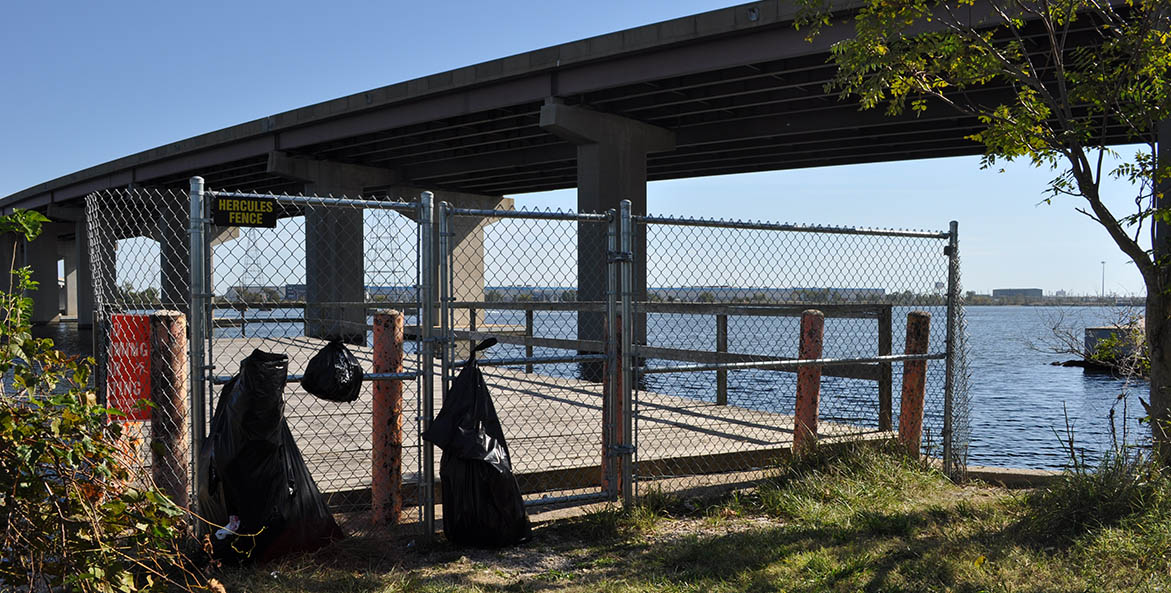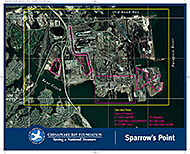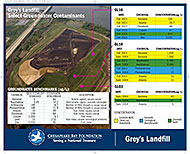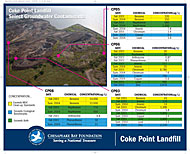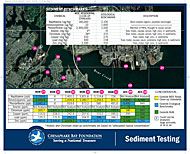Bethlehem Steel Corporation operated the Sparrows Point Steel Mill in Baltimore for more than 80 years. The facility was notorious for violating pollution regulations for air, water, and toxic waste that fouled local waterways—including Bear Creek, the Patapsco River, and Old Road Bay. Nearby residential areas, including predominately Black communities such as Turner Station, still endure the injustices caused by the operations and closure of Bethlehem Steel.
Unlike many industrial sites, Sparrows Point sits near homes and parks where people fish and crab. Swimming ladders can be seen on some of these piers, although residents say you are as likely to see a black bear in Baltimore as you are to see swimmers, for people fear what contaminants could be in the water. But the area floods regularly and exposure concerns linger.
Steps Toward Sparrows Point Clean Up
In 2022, highly polluted portions of Bear Creek were designated a priority site under the Comprehensive Environmental Responsibility, Compensation and Liability Act (CERCLA) better known as the “Superfund Site List.” This designation means that federal money became available to help clean it up. The U.S. Environmental Protection Agency (EPA) announced a $45 million cleanup project on roughly 61-acres of the 2,300-acre site as their preferred alternative that would be expedited over the next several years.
While this is welcome news, CBF and the local community have concerns.
A significant part of EPA’s cleanup plan involves dredging up the polluted sediment. Even under ideal conditions, dredging stirs up the material it removes, including contaminated sediment, harmful metals, and legacy pollutants like polycyclic aromatic hydrocarbons (PAHs), polychlorinated biphenyls (PCBs), and chromium. In fact, studies indicate that 8 percent of the sediment at Bear Creek is oil and grease.
Hydraulic dredging can suck up this sediment, but stirring it up also has the potential to oxidize (or reactivate) legacy pollutants and suspend them in the nearby waterways. During EPA’s initial project assessment, they did not consider potential exposure pathways through which legacy contaminants could impact people, such as through skin contact with floodwaters. Given the frequent flooding that occurs at Turner Station, residents could be exposed via contact with high water. There are also nearby oyster reefs built by CBF and partners over the last two decades. Dredged contamination could not only harm the oysters, but the people who come to tend to them, including participants in CBF’s education programs at Fort Carroll.
These are just a few of the concerns raised by CBF, local community members, and others. EPA has decided upon a plan for removal and disposal, which is posted on its Bear Creek Superfund webpage.
However, the tragic 2024 collapse of Baltimore’s Francis Scott Key Bridge will likely affect current Bear Creek Superfund cleanup plans. As EPA, MDE and other agencies assess, CBF urges them to stay as transparent with the community as possible.
History of Sparrows Point
Sparrows Point has a long history of environmental degradation. Many Bethlehem Steel workers faced lifelong illnesses and even death from the harmful materials they were exposed to. In the late 1990s, EPA and the Maryland Department of the Environment (MDE) sued Bethlehem Steel for numerous hazardous waste violations. The case was settled, and Bethlehem Steel was forced to evaluate contamination caused by the facility, including the extent to which offsite migration of toxic contaminants risked human health and the environment.
Bethlehem Steel went bankrupt in 2001 and the property went through a revolving door of different owners, which prolonged and complicated the cleanup process. In 2010, CBF and the Baltimore Harbor Waterkeeper filed a lawsuit against one of the site’s former owners, seeking a comprehensive investigation of offsite contamination. As of 2014, that assessment did not occur, so CBF decided to commission its own study to assess potential human health and ecological risks associated with exposure to sediments and water in Bear Creek.
The study determined that chemicals such as PCBs, PAHs, and metals are present but currently exist at levels that present a minimal risk to human health so long as there is no direct contact with the sediments. There is also a presumption that any fish caught in Baltimore Harbor are contaminated with PCBs and should not be consumed. The results of this study were shared with EPA, MDE, and the public in 2015.
Around the same time, the property was purchased by Sparrows Point Terminal, LLC—now Tradepoint Atlantic—who planned to redevelop it as a major East Coast logistics, manufacturing, and distribution hub. As part of an agreement with state and federal regulators, Tradepoint Atlantic committed roughly $50 million to ensure adequate funding for cleanup and remediation of contamination on the former steel mill site. The onsite cleanup work continues to this day. An additional $3 million was reserved for an evaluation of offsite contamination.
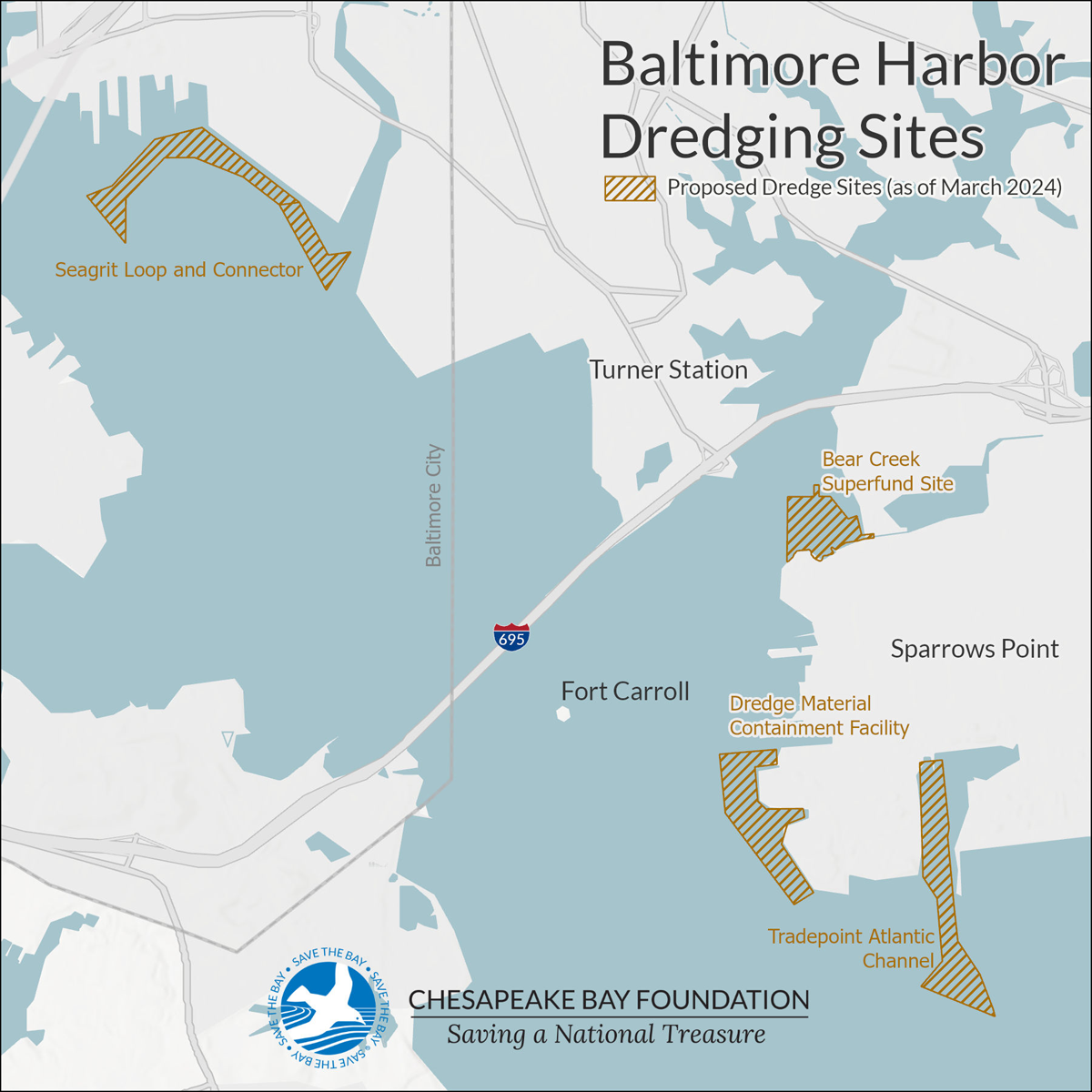
Several sites in the Baltimore Harbor are being proposed for dredging. These projects need to be undertaken in ways that protect the community and the harbor's natural resources.
Chesapeake Bay Foundation
Other Dredging at the Harbor
The Bear Creek Superfund is not the only place dredging is being proposed in the harbor. Other projects are utilizing dredging to expand waterway passages for ships. The Francis Scott Key Bridge is too low for the newer, bigger ships coming in and the Maryland Port Administration (MPA) is taking steps to make the Port of Baltimore a more competitive port terminal.
As of 2024, current projects include:
- Bear Creek Superfund
- Seagirt Loop
- Tradepoint Atlantic Ship Terminal
- Confined Aquatic Disposal (on hold indefinitely)
Current regulations state that dredge from the Baltimore Harbor cannot be exported—it must stay in the harbor. Which begs the question, where will it all go?
The volume of dredging in such proximity over a short period of time has neighboring communities concerned. These projects need to be done, but in a way that will protect the community and natural resources in the harbor.
CBF encourages the property owners, EPA, and MDE to remain transparent during these processes and to ensure that onsite assessments and cleanup activities reduce offsite migration of contaminants. CBF also encourages the community to stay involved and make concerns known as the projects progress.
Bear Creek Superfund Site Resources
Bear Creek Sediments, Sparrows Point, MD, Stay Updated, Get Involved
Bear Creek added to the Superfund National Priorities List
2015 Toxicity Testing of Baltimore Harbor Sediments (PDF)
November 30, 2015
2015 Toxicity Testing Presentation by Lance Yonkos & Sharon Hartzell (PDF)
December 16, 2015
Health-Based Evaluation of Environmental Data from Sparrows Point Site (PDF)
November 2015
Assessments of Health Risks Presentation by Randall Wentsel, Ph. D., Exponent Inc. (PDF)
December 16, 2015

